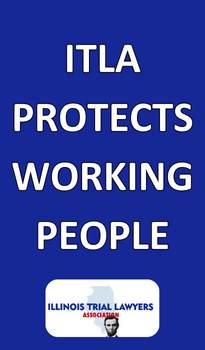* Subscribers were told about this yesterday and it’s another reason why I felt I could take today off…
Joint Statement From Governor Pritzker, Senate President Harmon, and House Speaker Welch on Special Legislative Session to Protect Reproductive Rights
As we build on Illinois’ nation-leading abortion protections and access, it is essential to bring lawmakers and advocates into the room to continue to work together. In the coming weeks, as the ripples of the decision to overturn Roe are felt throughout the nation, we expect to get an acute sense of our needs and how Illinois can play an even more vital role in standing up for reproductive freedom. We plan to work closely together for the remainder of the summer to assess every possibility of what we can do and convene a special session in the coming months.
…Adding… Tribune…
As for taking more time before convening lawmakers on abortion, “we need to look at how this is already impacting states and how it will impact states over the next couple months,” Abudayyeh said.
During a White House call with Democratic governors on Friday, Pritzker called for additional federal funding to help states where abortion remains legal.
The first-term Democrat has made his support for abortion rights a central theme of his reelection campaign. In the November general election, he faces conservative state Sen. Darren Bailey of Xenia, who has said he is opposed to abortion in all cases except to spare the life of the mother.
* ACLU…
Governor JB Pritzker, Senate President Don Harmon and House Speaker Chris Welch today announced that they will not call a special session of the Illinois General Assembly this week to address measures Illinois can take in response to the Supreme Court overturning the landmark decision recognizing a right to abortion in Roe v. Wade. The following from the ACLU of Illinois can be attributed to Khadine Bennett, Advocacy and Intergovernmental Affairs Director for the organization:
We applaud the careful, deliberate approach announced by Governor Pritzker and the legislative leaders today aimed at adding new protections for abortion and other reproductive healthcare rights. The goal of this effort should be to put in protections that are holistic, well-researched, include the voices of providers and advocates and can withstand the inevitable challenge of anti-abortion foes in Illinois. This goal is best served by the collaborative process announced today.
Each of us should remember that a reckless majority of the Supreme Court has cast us all into uncharted waters in terms of law, the provision of services and the role of government. Given Illinois’ unique role as a leader in protecting access to abortion care, we need an approach that addresses this unprecedented situation, works best for Illinois and individuals coming to our state for care, as well as adds protections and provides resources for healthcare providers and patients. These protections and resources should be implemented and available as early as possible.
The ACLU of Illinois stands ready to work with government officials, legislators, healthcare and service providers, advocates and others to move this process forward.















